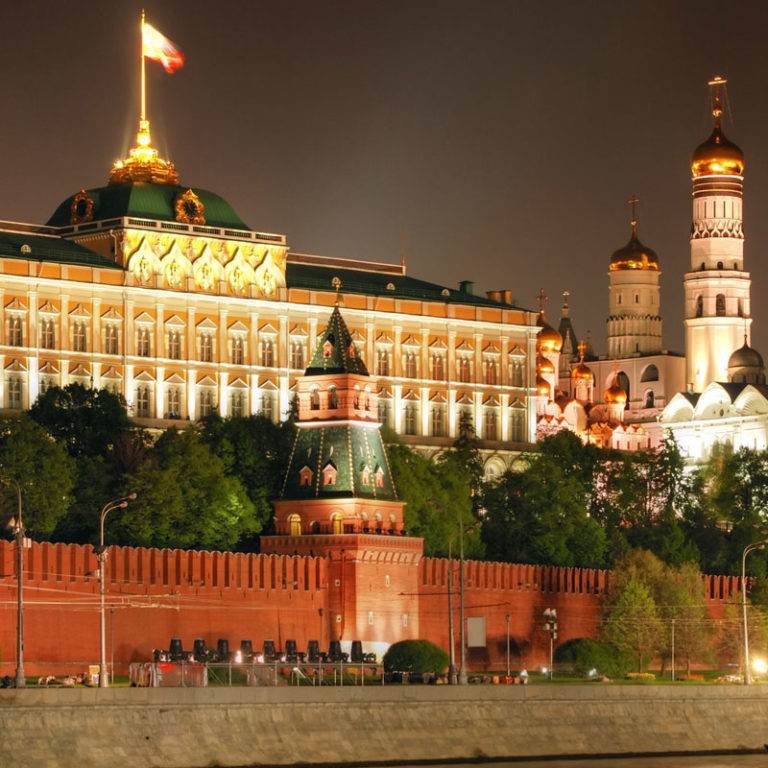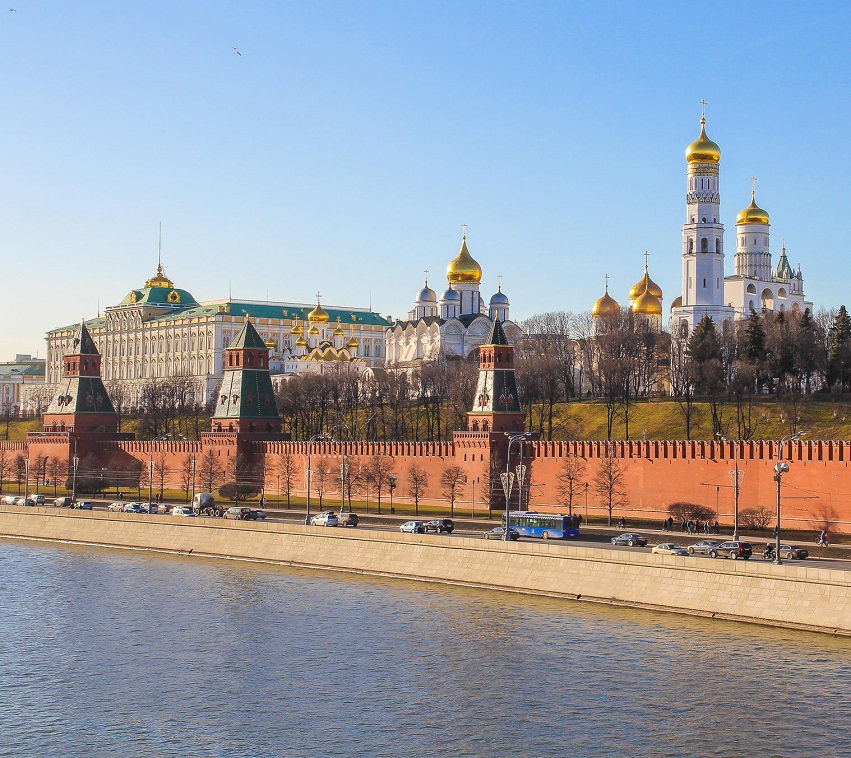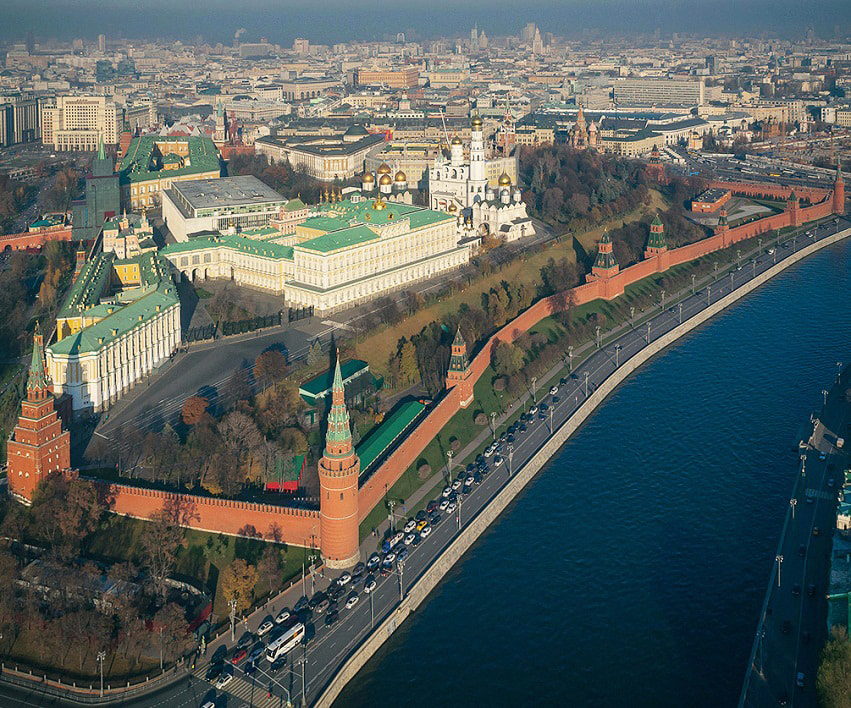Short description
The Kremlin is one of the biggest tourist attractions of Moscow and is the official residence of the Russian president. Its architectural complex is included on the World Heritage List of UNESCO.
Information for visitors
Metro station: Okhotny Ryad, Biblioteka imeni Lenina, Borovitskaya, Aleksandrovsky Sad, Arbatskaya.
Phone: +7(495)695-37-76
Website: www.kreml.ru
Ticket offices are open daily from 9:30 to 16:30, closed on Thursdays.


Access map
Description and photos
The Kremlin is situated in the central part of Moscow, close to the bank of the Moscow River. By its shape, it resembles an irregular triangle. While its southern side is turned to the Moscow River, its northern and north-western parts border on Red Square and Aleksandrovsky Sad.
The Russian Orthodox church has a big presence in the Kremlin. Starting from the 14th century, its territory has been home to many cathedrals and monasteries.
Moscow’s Red Square is full of historic buildings, it has one of the most famous Russian landmarks, the St. Basil cathedral, as well as another Moscow sight, Lenin’s mausoleum.
The Moscow Kremlin has many historic objects, one of them is the Palace of Facets, the throne room of the tsars of Russia completed in 1492. Its building is surrounded by cupolas of the Kremlin’s many churches and the walls of the Grand Kremlin Palace.
To enter the Kremlin, its visitors pass through the Kutafya Tower, built in 1516. There are many suggestions as to what its name meant: a corner, a clerical cap or a disorderly looking woman.
Within the Kremlin complex there are many interesting objects and constructions such as the Tsar Cannon, the Tsar Bell and the Bell Tower of Ivan the Terrible which has 34 bells, each having its own name. Curiously, this tower’s bells were only rung on special occasions.
History of construction
In the beginning, Moscow was the size of the modern Kremlin. To protect it from attacks, its residents constructed a wall around it.
Initially, the Kremlin walls were made of oak. In 1368, the prince of Moscow Dmitry Donskoy ordered the construction of white-stone walls and towers around it. A century later, another Moscow ruler – Ivan III – decided to rebuild the Kremlin. For this purpose, he invited the famous Italian architect Aristotele Fioravanti who laid the foundation of the modern Kremlin architecture.
In the beginning of the 16th century, the red-brick Kremlin became one of the most impregnable fortresses in Europe surrounded by water from all sides.
After Peter the Great moved the Russian capital to St. Petersburg in 1712, the Moscow Kremlin lost its status as the tsar’s permanent residence. Nevertheless, its buildings were maintained: its walls were fortified while its drained moats were again filled with water to prevent it from possible invasions.
In 1768, the empress Catherine II moved part of the Senate from St. Petersburg to the Kremlin.
In the early 18th century, the Kremlin was largely damaged during Napoleon’s invasion. However, by 1836 it was restored, and by 1849, under Nicolas I, the Grand Kremlin Palace was built.
In 1918, under Soviet rule, Moscow became the capital again, the Kremlin became its political center. However, its architectural complex suffered greatly during the Soviet rule, as many of its ancient buildings were destroyed.
In 1930, Lenin’s Mausoleum on Red Square was completed, and in 1967 the Tomb of the Unknown Soldier memorial was built on Manezh square near the Kremlin.



